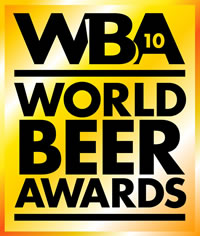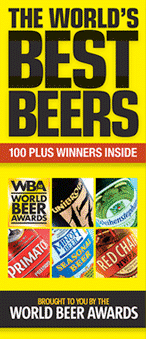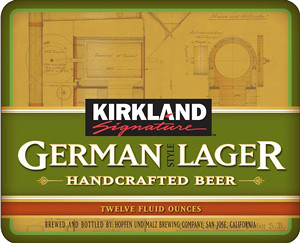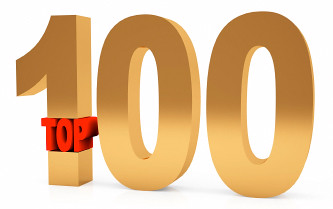
It’s my great pleasure to host our 51st Session, my second time playing host over the four years we’ve been doing them. I chose a frightfully complicated topic which I’ve taken to calling by an overly grand name: The Great Online Beer & Cheese-Off. You can go back and read the long, original version of what’s going on, or here it is in a nutshell.
- Pick up three cheeses:
- Maytag Blue, or another blue cheese.
- Widmer Cellars 1-yr old aged cheddar, or another aged cheddar.
- Humboldt Fog, or another goat cheese.
- Pick a few beers you think will pair well with each cheese.
- Drink them with the cheese.
- Write up your results and post them on or before Friday, May 6.
- Leave a comment here, the announcement, or send me an e-mail so I can find your Session post.

So in addition to the Session Announcement , I also wrote about cheese and beer pairing in my last newspaper column, similarly challenging readers to try some beer with the same three cheeses and send in their best pairings, too.
Wednesday evening, a few friends joined me to try several beers with each of the cheeses. Sean Paxton, the Homebrew Chef, and Pete and Amy Slosberg, who started Pete’s Wicked Ales in the 1980s, each brought a beer for each cheese, I picked a couple for each, and then I included some of the most promising sounding pairings that readers of my newspaper column sent in. Here’s what we discovered.
The Beer & Cheese Pairings
1. Widmer 1-Year Aged Cheddar

We started with the cheddar. The Widmer is a simple cheddar, but with solid, strong flavors. I love the nuttiness and the way it melts in your mouth. The beers we had for the cheddar were the Belgian sweet gale beer, Gagleer, Bear Republic’s Racer 5 , Russian River’s Pliny the Elder, Anderson Valley’s Brother David’s Double, Speakeasy’s Payback Porter, HUB’s Secession Cascadian Dark Ale and Firestone Walker’s Pale 31.
A few of our choices didn’t really work at all, which was immediately apparent. The Gagleer was too sweet, Pale 31 was too mild to stand up to the cheese and the roasted malt in HUB’s Cascadian Dark Ale was accentuated by the cheese, making the pairing too harsh to work well. The vegetal, oniony cattiness of Pliny — delightful on its own — brought out an equal amount of bitterness in the cheese and led to a hash astringency in the combination. While talking through the cheeses, Pete asked if I had another dopplebock we might try, so I opened an older Salvator I had in my beer cellar (a.k.a. “the garage”). Even slightly oxidized, it was our third best pairing with the cheddar. It had only a slight malt sweetness, which complimented the nutty flavors in the cheese nicely. Racer 5, Bear Republic’s IPA, was our second favorite. It seemed to have the right level of bitterness to work with the Widmer Cellars cheddar, the two were a little bit more than the some of their parts. I think it could have been fun to try the cheese with just a variety of IPAs, because it really seemed like the IBUs and the choice of hop varieties make a big difference in whether or not the beer and cheese pairing is a hit or a miss.
Our top choice, a unanimous decision, was Speakeasy’s Payback Porter. The cheese brought out an underlying smokey quality in the beer, accentuating it perfectly, and made the two something more than either could achieve alone. And that, we concluded, was what made a pairing great; when the two elements — the beer and the cheese — combined to become a third thing that was unique in and of itself.
2. Cypress Grove Humboldt Fog

We tasted the Humboldt Fog, a goat cheese from Cypress Grove Chevre, second. It’s a fantastic cheese; with unmistakably strong flavors. It’s creamy, with a zippy tang and sharp bite.
The beers we had for the Humboldt Fog were Aventinus Weizenbock, the Bruery’s Orchard White, Ommegang’s Hennepin, Hoegaarden, Russian River Temptation and Saison Dupont.
The Orchard White was an utter failure, the spices and floral notes really clashed with the cheese, making it too perfumy. We also tried the Pliny from the last flight and found its bitterness stomped on the cheese. Both the Payback Porter and HUB’s Black IPA did likewise, with the beer bringing out too much bitterness in the pairings that overwhelmed the cheese. In “The Brewmaster’s Table,” Garret Oliver singled out Hennepin as a beer to pair with goat cheese, but it didn’t actually work too well with the Humboldt Fog. It wasn’t terrible, but it brought out a bitterness in the beer when combined with the cheese that was less than ideal.
But most actually worked fairly well with this versatile cheese. The Velvet Merkin/Merlin (which we went back and tried; see below) worked better than I expected; the oats in the stout smoothed and rounded out the flavor combinations. And the orange peel and coriander in the Hoegaarden, a last minute impromptu addition, brought all sorts of complexity to the pairing that made it hard to choose the best choice with the goat cheese.
In addition to the new ones we added for each cheese, we also left all of the beers on the table from the previous cheese (and yes, the table filled up quickly) so we could try an even greater variety of combinations. As a result, we might never have discovered how well the Racer 5 went with the Humboldt Fog. It might not have occurred to be pair such a hoppy beer with the goat cheese, but the contrast was delicious, and we gave it an “honorable mention.”
For our third best, we picked Temptation. The two were just heavenly together, as was our second choice: Saison Dupont. Both beers are zesty, spicy and complex and served to bring out a lot of flavor components from the cheese in the process, hitting that sweet spot of being more than the sum of their parts. But the beer that did all that, but better and with far more intangibles, was the Aventinus Weizenbock from Schneider-Weisse. The beer itself has an awful lot going on, and brought out so much more in the cheese that we thought we’d died and gone to heaven. I’d swear we heard choirs of angels faintly ringing in the air.
3. Maytag Blue

Lastly, we tried the Maytag Blue, a classic blue cheese that crumbles easily and is very spicy and tangy. The runnier it gets, the more I like it.
In addition to the beers we’d opened before it, we also tried it with Firestone Walker’s Velvet Merkin (or Merlin for the feint of heart), Lagunitas Imperial Stout and North Coast’s Old Rasputin.
Most of the lighter styles from the previous flights weren’t up to the challenge of keeping their own against such as strong cheese as Maytag Blue, though the Racer 5 was an exception, and showed itself to be a very versatile beer to pair with a variety of cheese. Both the Velvet Merlin and the Lagunitas stout were strong enough and worked well enough for us to declare a two-way toe for third place. Personally, I thought the Lagunitas had a slight edge because it was stronger and stood up better than the softer oatmeal stout. But I was alone in that, and unable to break the deadlock.
Of the stouts, the already wonderful Old Rasputin became even better with the blue cheese, earning itself second place in our informal contest. Strength against strength, complexity upon complexity, the two were a beautiful match. There’s just something about a big, lip-smackingly good complex imperial stout, with all its roasty goodness, malty sweetness and alcoholic punch, that seeps into the veins of the tangy power of a blue cheese and can match it round after round in the boxing ring inside your mouth. But remember that was our second choice. The best was yet to come.
Hands down, and unanimously so, we liked the Russian River Temptation from the second flight as the best beer to pair with the Maytag Blue. It was simply “otherworldly.” It’s even hard to describe. We all took a sip, looked at each other furtively and knew. It was that good. Everything just worked. The combination of the two was so much more than the either individually, it was if they were made to go together.

And that, in essence, was the takeaway, what the exercise taught us. Like “white wine with fish,” any kind of guidelines about what beer styles goes with what cheese is only slightly better than guesswork. There is a very specific component to each beer and each cheese that alone determines if the pairing works or not, and that seems especially true for stronger beers (in both strength and flavors) and stronger cheeses, too. It may well be that milder cheese and beer do more easily fit a framework of guidelines. But in our little experiment, it became clear that guidelines are just a starting point. You have to really get under the hood and try various beers and cheeses together. And what you find is that while one IPA may work with one cheddar, it may not work at all with another. That makes it much harder to predict what will work together, but at least trying endless combinations is not exactly a grueling, miserable task. I’ll gladly try fifty beers with one one cheese to find that perfect pairing. Because when its good, holy moley, is it ever good.
The other thing we noticed is that beers with pronounced flavors, such as very strong bittering or very sweet malt tended to accentuate those when combined with the cheese. As a gross generality, beers that were more balanced tended to work much better with whichever cheese we paired with them. That was interesting, and might require some more research.
Well, that was great fun. Now it’s time to open another bottle of Temptation and cut up some Maytag Blue. Yum. I can’t wait to hear what everybody else tried and what combinations worked best. So that’s my round one. Look for the details on round two, Session #51.5 — which will take place in two weeks on Friday, May 20 — in the round-up, which I’ll likely be posting tomorrow morning.


















